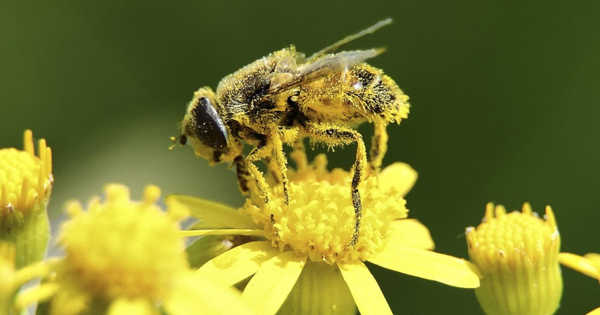The dangers of neonicotinoid insecticides are unlikely to be mitigated. This is the conclusion of a new study, which found that an insecticide designed for commercial plant nurseries is harmful to a typical bee even when applied at well below the label rate and the plant receives a lot of water.
According to a new UC Riverside study, a type of insecticide used in commercial plant nurseries is harmful to a typical bee even when applied at a rate far below the label rate. The findings were published in Proceedings of the Royal Society B: Biological Sciences.
Neonicotinoids, which are chemically similar to nicotine, are insecticides that protect against plant-consuming insects like aphids but severely harm beneficial insects like bees. Commercial growers make extensive use of them.
Much research has been conducted on their use in food crops such as canola, where they are typically applied in low doses. This study, however, is one of the few to look at neonicotinoid use in potted ornamental plants, which can be more potent, acute sources of exposure to the toxin for bees.
A new UC Riverside study shows that a type of insecticide made for commercial plant nurseries is harmful to a typical bee even when applied well below the label rate.
“Neonicotinoids are frequently used as seed treatments on food crops,” explained UCR entomologist and lead study author Jacob Cecala. “However, for aesthetic reasons, they are usually applied in greater quantities to ornamental plants. The effects are lethal regardless of how much water the plants are given.”
Cecala expressed surprise at the finding, given that neonicotinoids are water-soluble. He went into the study believing that more water would dilute the amount of harm they did to the bees. The researchers were also interested in whether increased watering could benefit bees despite insecticide exposure by increasing the quantity or quality of nectar provided by plants.
To test these hypotheses, the researchers raised bees on flowering native plants in pots that received either a lot or a little watering. Plants were chosen based on their popularity in nurseries, drought tolerance to ensure blooming even in dry conditions, and bee appeal. Furthermore, half of the plants were treated with insecticide.
Despite the fact that increased water reduced the pesticide’s potency in flower nectar, the negative effects on bees were still observed. “Unfortunately, we observed a 90% decrease in bee reproduction with both high and low levels of irrigation,” Cecala explained. This study is also one of the few to look at neonicotinoid effects on solitary bees via ornamental plants, which account for more than 90 percent of native bee species in North America and an even higher percentage in California.

Solitary bees are not bees that have abandoned the hive and are now on their own. This is a bee that lives alone, does not produce honey, does not have a queen, and does not live in a hive. They are not aggressive because they do not have a honey store to protect.
“Solitary bees are more representative of the ecosystem here, and they may be more vulnerable to pesticides,” said Erin Rankin, a UCR entomologist, and study co-author. If a social worker bee, such as the honeybee, is exposed to insecticide and dies, the hive’s longevity will not be affected. If a solitary bee dies, its lineage is terminated.
The researchers used alfalfa leafcutter bees in this study, which build tunnel nests and lay eggs one at a time. They are closely related to California’s solitary native bees and belong to a genus that is found all over the world. When Cecala and Rankin first attempted this experiment, they used the insecticide concentration recommended on the product label. All of the bees died within a few days.
They repeated the experiment using one-third of the recommended dose and still found negative effects on reproduction, the ability of the bees to feed themselves, and overall fitness. “It nearly wiped them out,” Cecala explained.
Though this study used a neonicotinoid product designed for nurseries, formulations of similar products designed for home gardeners are also highly concentrated. Plants in nurseries or backyards cover a smaller total area than food plant fields such as corn or soy. High-potency neonicotinoid products, on the other hand, can have a significant impact even in small areas. In 2013, neonicotinoids applied to flowering trees in an Oregon retail parking lot caused a massive bumblebee to die off, with over 25,000 found dead.
The researchers advise nurseries to quantify the number of pesticides that make their way into flowers given their watering and pesticide regimes and to consider alternative management practices that reduce harm to bees and the ecosystems that rely on them.
“It’s not as simple as ‘don’t use pesticides,’ because they’re sometimes necessary,” Cecala explained. “However, people can try a different class of insecticide, apply them to plants that aren’t attractive to bees, or find biological pest control methods.”
















